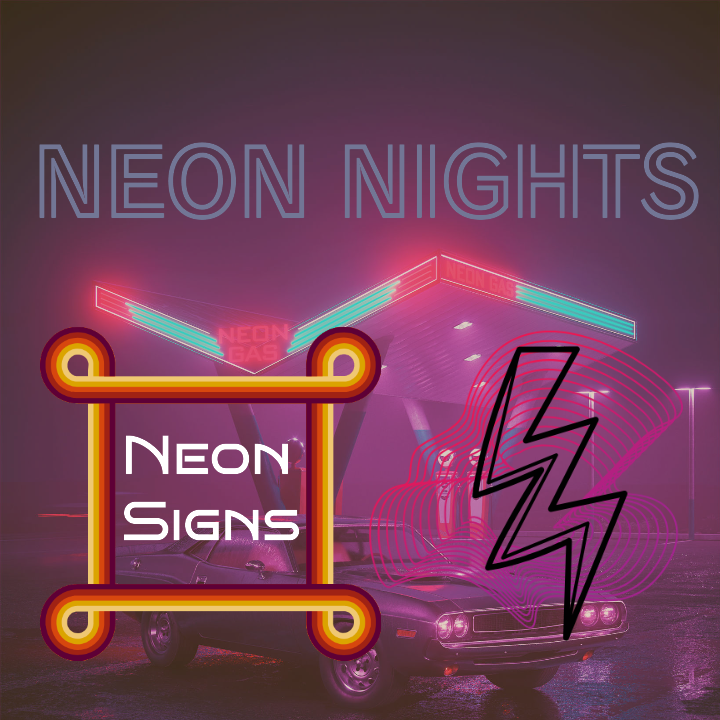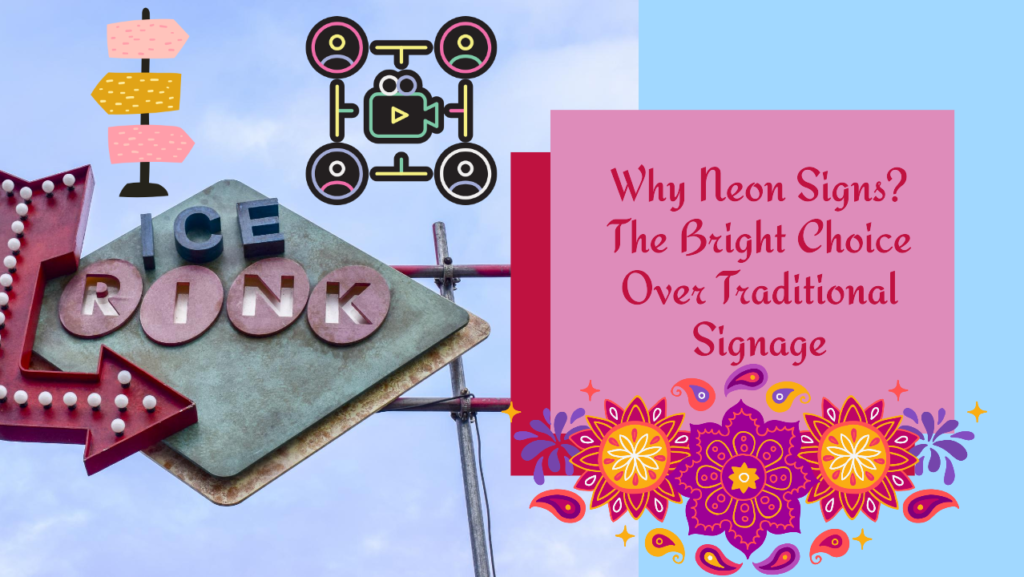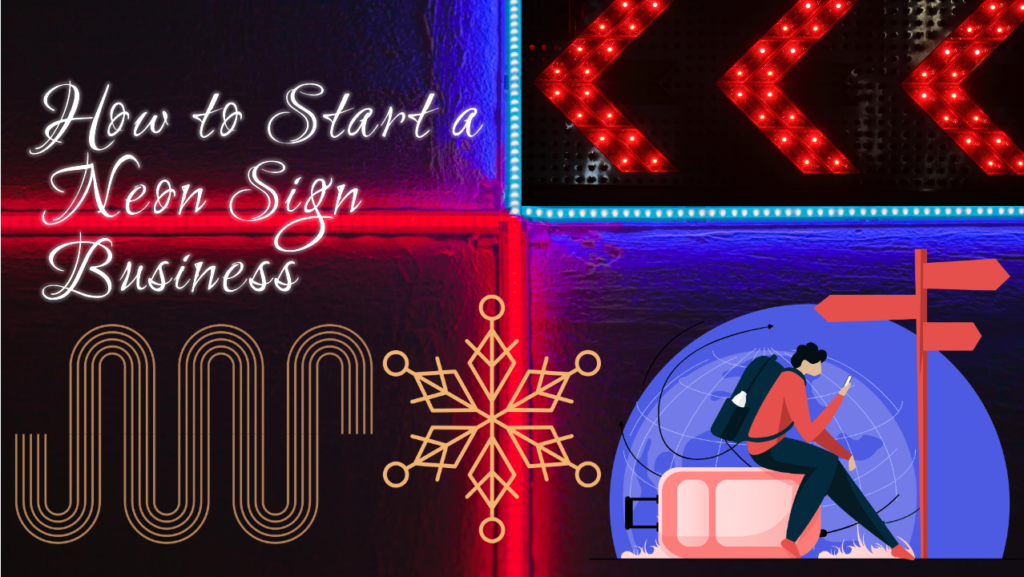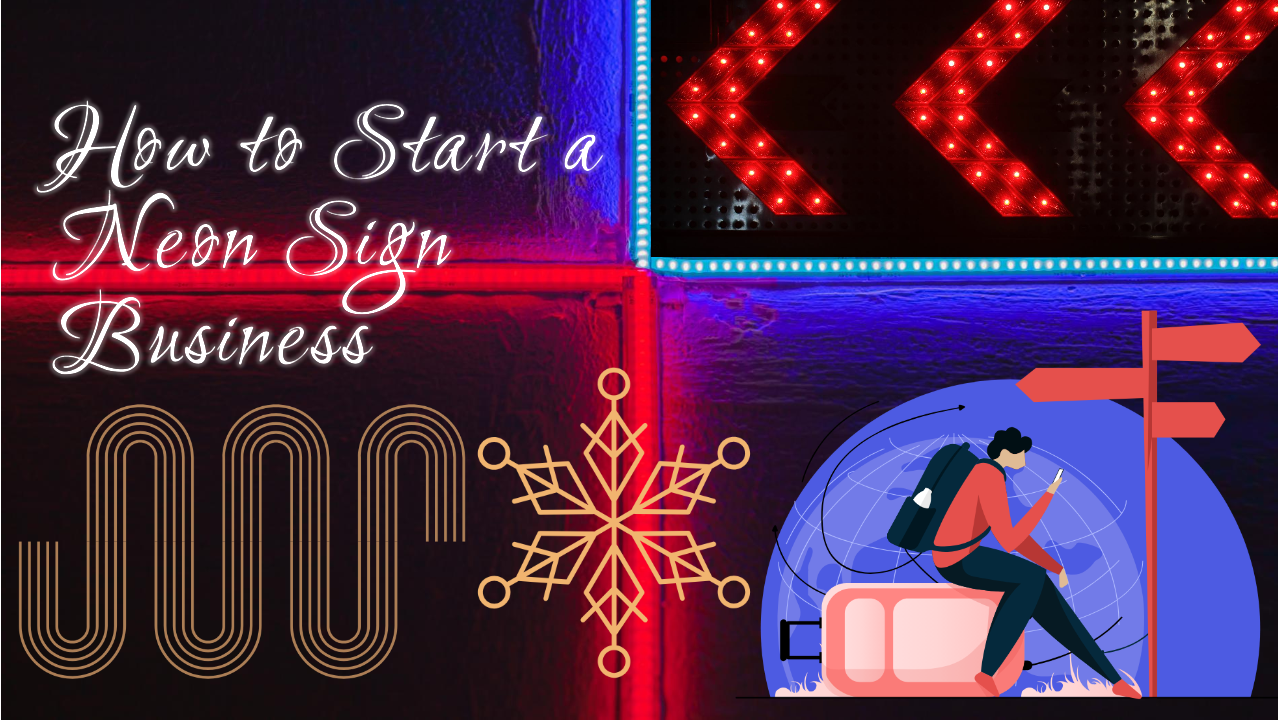
Thinking about “How to Start Your Own Neon Sign Business”? You are onto something brilliant—literally and financially. Neon signs are not just eye-catching, they are a business asset with a glowing ROI.
Neon signs have a magical way of grabbing our attention, and guess what? They are not just for big brands anymore. With the rise of custom neon signs, even small businesses and individuals are getting in on the action. So, why not illuminate your entrepreneurial path and turn those bright lights into big profits? Yep, we are talking about starting your own neon sign business.
In this all-encompassing guide, we are committed to shining a light on the key steps to start your neon sign business successfully. From pinpointing your potential customers to drafting a business plan that’s more than just a formality, we have got you covered. And don’t worry, we are keeping it simple, straightforward, and fun—because who says business has to be boring? Let’s get started on this bright neon adventure!
Why Neon Signs? The Bright Choice Over Traditional Signage
Ever walked down a street and found your eyes irresistibly drawn to a glowing sign? That’s the power of neon, baby! Neon signs are the rockstars of the signage world, and here’s why they are stealing the limelight from traditional signs.

The Popularity Surge:
First off, let’s talk about how neon signs have become the go-to choice for businesses, big and small. They are not just for retro diners or Vegas casinos anymore. From chic boutiques to trendy cafes, neon signs are lighting up businesses everywhere. And it’s not just businesses, even homeowners are opting for custom neon signs to add a dash of pizzazz to their living spaces.
Advantages Over Traditional Signs:
- Eye-Catching Brilliance: Traditional signs just can’t compete with the vibrant glow of neon. It’s like comparing a flip phone to a smartphone, both serve a purpose, but one clearly outshines the other.
- Energy-Efficient: Contrary to popular belief, modern neon signs are incredibly energy-efficient. LED neon signs, for instance, consume about 20% less electricity than traditional signs.
- Customization Galore: Want your business name in neon lights? Or perhaps a neon sign logo? With custom neon signs, your imagination is the only limit.
- Durability: These signs are built to last. High-quality materials like acrylic backboards ensure your neon investment pays off for years.
- Easy Installation: Whether it’s indoor or outdoor neon signs, setting them up is a breeze. Most come with wall mounting kits and easy-to-follow guides.
- Instant Brand Recognition: A unique neon sign can become synonymous with your brand, making it easier for potential customers to spot you in a sea of businesses.
So, if you are drafting a business plan for your new venture or looking to revamp your existing one, investing in a neon sign might just be the bright idea you have been searching for!
How to Start Your Own Profitable Neon Sign Business in 07 Steps

Assessing the Market Opportunity: A Crucial Step in Launching Your Neon Sign Business
If you are drafting a business plan for your new venture or looking to revamp your existing one, investing in a neon sign might just be the bright idea you have been searching for!
Before you get lost in the glow of neon lights, let’s focus on something equally illuminating—market research. This isn’t just a box to tick off, it’s the cornerstone of your business plan. Here’s why it’s non-negotiable and how to go about it.
Why Market Research is Non-Negotiable:
- The Importance of Market Research: Think of market research as your business compass. It provides invaluable insights into market size, growth trends, and the competitive landscape. Without this data, you are essentially navigating your business journey blindfolded.
Crunching the Numbers: Market Size, Trends, and Rivals
- Research Market Size: How big is the neon sign market, and what share can you realistically capture?
- Growth Trends: Neon signs are more than a trend, they are a growing industry. But how fast is it growing? The rise of custom neon signs and energy-efficient LED neon lights indicates a market that’s not just growing but also diversifying. Understanding these trends is crucial for positioning your business strategically.
- Competitive Landscape: Who are your competitors, and what’s your edge?
Quick Tip: “Know your competition but focus on your own game.”
Who’s Buying What You Are Selling?
- Identify Ideal Target Customers: From trendy cafes to chic beauty salons, who are the people who will light up at your neon signs?
- Understanding Neon Sign Needs: What are customers looking for? Custom designs, energy efficiency, or perhaps both?
The Locale Factor: Is Your Area Neon-Friendly?
- Local Market Viability: Can your local market support another neon sign business, or is it saturated? Your geographic location can significantly impact your business. Is there a sufficient customer base in your locale to sustain a neon sign business? A bustling urban area with a vibrant nightlife and a high concentration of businesses could be an ideal setting.
Ideal Customer Segments
| Customer Type | Neon Sign Needs |
|---|---|
| Cafes | Custom Designs |
| Salons | Bright, Eye-Catching Signs |
| Homeowners | Energy-Efficient Options |
Note: “Knowing your enemy and yourself will make you undefeated in a hundred battles.” – Sun Tzu
So, before you switch on your neon business sign, make sure you have switched on your market research. It’s the surefire way to illuminate the path to success, attracting potential customers and outshining the competition.
Crafting a Strategic Business Plan for Your Neon Sign Venture
Navigating the entrepreneurial landscape without a business plan is akin to sailing without a compass. It’s not just a document; it’s a strategic tool that outlines your business’s vision, objectives, and the steps needed to achieve them. Let’s delve into the key components of a robust business plan for your neon sign business.
Choose Your Business Structure: The Foundation Matters
- LLC vs. Sole Proprietorship: An LLC offers liability protection but involves more paperwork. A sole proprietorship is simpler but puts personal assets at risk. Choose wisely.
- Why Structure Matters: Your business structure affects your taxes, liability, and even your brand image.
Vision, Objectives, and Offerings: The Soul of Your Business
- Develop Company Vision: What’s your big picture? Is it to illuminate every café in town or to revolutionize the neon sign industry?
- Objectives and Milestones: Break down your overarching vision into measurable objectives, complete with timelines
Expert Insight: “A compelling vision without actionable objectives is merely a wish.”
- Your Offerings: Will you focus on custom neon signs, or offer a range of ready-made options too?
Pro Tip: “A vision without a plan is just a dream.”
Financial Projections: The Numbers Game
- Initial Investment: Calculate the startup costs, including equipment, materials, and marketing expenses.
- Revenue Projections: Develop a pricing model that aligns with your target market while ensuring profitability.
- Financial Milestones: Set quarterly revenue goals and track them diligently.
Marketing and Expansion: The Growth Engine
- Comprehensive Marketing Plan: Identify the channels—social media, SEO, partnerships—that will help you reach your potential customers.
- Long-Term Growth: Consider future avenues for expansion, such as diversifying product offerings or entering new markets.
Your business plan isn’t just a document, it’s a roadmap to success. So, take your time, do your homework, and get it right. After all, a well-lit path is easier to follow.
Securing the Financial and Legal Building Blocks: Funding and Licenses
Embarking on a neon sign business venture? Excellent choice. However, before you can illuminate the market with your vibrant offerings, there are some critical financial and legal boxes to tick. Let’s delve into the essentials.
Legal Essentials: Permits and Licenses You Can’t Ignore
- Business License: Your operational cornerstone. Without it, you are not in business, you are in trouble.
- Tax Identification Numbers (TINs): These are non-negotiable for tax filings and employee management.
- Specialized Permits: Depending on your jurisdiction, additional permits may be required, especially if you’re manufacturing neon signs.
Expert Insight: “Consult a legal advisor to ensure you’re fully compliant. It’s better to be safe than sorry.”
Capital Allocation: Funding Strategies for Sustainable Growth
- Bank Loans: Traditional yet effective, but they require a robust business plan and financial forecasts.
- Equity Financing: Angel investors or venture capitalists can offer substantial funds but usually demand a stake in your business.
- Crowdfunding: A modern approach that leverages your future customer base but can be time-consuming.
Funding Options and Their Pros & Cons
| Funding Option | Pros | Cons |
|---|---|---|
| Bank Loans | Fixed Repayment | High-Interest Rates |
| Investors | Large Funds | Equity Loss |
| Crowdsourcing | No Repayment | Time-Consuming |
Risk Mitigation: Insurance Policies to Consider
- General Liability Insurance: To safeguard against legal claims.
- Workers’ Compensation: Mandatory if you’re planning to have employees.
While the neon signage business offers a luminous path to profitability. It’s imperative to navigate the financial and regulatory corridors with precision. By doing so, you are not just setting up a business; you’re laying the foundation for an enduring enterprise.
Sourcing Materials and Technology
In the competitive landscape of the neon sign industry, the materials and technology you choose can significantly impact your bottom line and market positioning. This section is designed to arm you with critical insights to make data-driven decisions that can set you apart from the competition.
The Great Debate: Traditional Neon vs LED Neon
- Traditional Neon: Crafted from glass tubes and filled with noble gases, traditional neon signs offer a classic, irreplaceable glow.
- Pros: Unmatched luminosity, extensive color palette
- Cons: Fragility, higher energy consumption, and operational costs
- LED Neon: Made with silicone tubes and LED lights, these signs are the future-forward alternative.
- Pros: Energy efficiency, durability, lower operational costs
- Cons: Limited color spectrum, lacks the “vintage” appeal
Decision Matrix: Traditional vs. LED Neon
| Factors | Traditional Neon | LED Neon |
|---|---|---|
| Material | Glass, Noble Gases | Silicone, LED Lights |
| Energy Efficiency | Moderate | High |
| Durability | Low | High |
| Cost | High | Moderate |
The Role of Acrylic in Modern Signage
Acrylic serves as a robust and versatile substrate for neon signs, offering both structural support and aesthetic versatility. Its resilience to weather conditions makes it a go-to choice for outdoor installations.
The Rise of LED Flex Technology
LED Flex technology is revolutionizing the neon sign industry by offering unparalleled design flexibility without sacrificing durability or energy efficiency.
Insider Tip: Quality should be your guiding principle when sourcing LED Flex. The upfront investment will yield long-term dividends in reduced maintenance and energy costs.
Indoor vs. Outdoor Signage: Context Matters
- Indoor Signs: Primarily designed for aesthetic appeal, these are less robust but highly customizable.
- Outdoor Signs: Engineered for durability to withstand environmental factors; generally larger and more rugged.
Expert Insight: The choice between indoor and outdoor neon signs should be strategically aligned with your target customer’s needs and the intended placement location.
Key Takeaways for Strategic Sourcing
- Traditional neon is ideal for projects requiring authentic, vintage aesthetics.
- LED neon is the choice for modern, energy-efficient applications.
- Acrylic backings offer a balance of durability and design flexibility.
- Quality LED Flex technology is a long-term investment that pays off in operational efficiency.
By making informed decisions in sourcing materials and technology, you are not just building signs, you are building a brand. So go ahead, make choices that will let your business—and your signs—shine the brightest!
Mastering Production and Quality Control in Your Neon Sign Business
In the competitive landscape of neon sign manufacturing, the quality of your product is not just a priority—it’s your ticket to business longevity and customer loyalty. Here, we delve into the intricacies of producing neon signs that not only captivate but also stand the test of time.
The Production Process: From Design to Glow
- Design Phase: This is where your creativity shines. Use CAD software to create precise designs that meet customer specifications.
- Material Selection: Choose between traditional neon or LED neon based on the project’s needs.
- Assembly: Craftsmen bend the glass or silicone tubes to match the design, and then the tubes are filled with gas or fitted with LEDs.
- Electrical Wiring: This is the backbone of your sign. Ensure all electrical components are securely fitted.
- Testing: Before it leaves the shop, each sign undergoes rigorous testing to ensure it lights up as intended.
Quality Control: The Non-Negotiables
- Visual Inspection: Each sign must undergo a rigorous visual examination to identify any aesthetic or functional flaws.
- Operational Testing: Implement a series of on/off tests to validate the electrical components and overall functionality.
- Environmental Resilience: For outdoor signs, weather resistance is a must. Subject your signs to simulated weather conditions to gauge durability.
- Compliance and Certification: Ensure every sign meets or exceeds local and national safety regulations.
Pro Tip: Always document your quality control steps. It’s not just good practice, it’s essential for liability protection.
Key Takeaways
- A meticulous design phase sets the stage for a successful production process.
- Never compromise on materials, quality sourcing pays off in the long run.
- Quality control is not a one-off step but an ongoing commitment.
By focusing on both production and quality control, you are not just making neon signs; you are crafting customer satisfaction and glowing reviews.
Promote and Grow Your Neon Business
After getting your neon-bending business up and glowing, it’s time to spread the word so it shines bright. A strategic marketing plan is key for attracting ideal customers.
Build a Strong Brand Identity
Develop an eye-catching logo and brand aesthetic that reflects the creativity of your custom neon. This will help you stand out and look professional.
- “A logo with neon tubing built right in immediately tells people what you do.”
Show Off Your Best Work
- An online portfolio highlighting your designs and capabilities is a must. Share photos on your website and social media so people can vividly see your neon skills.
Leverage Digital Marketing
- Run local Google and Facebook ads to connect with nearby shop owners.
- Dedicate your budget to raise awareness and get clicks to your site.
- Target keywords like “open sign” and “business signage”.
- Drive traffic to your website to view portfolio examples.
Network the Old-Fashioned Way
- Attend local business events to meet architects, designers, and event planners.
- Bring eye-catching neon postcards to share your services.
- Ask for referrals from happy clients to build word-of-mouth buzz.
- “80% of my new clients come through word-of-mouth referrals.”
Focus on Customer Service
- Satisfied clients are your best promoters. Go above and beyond on each project to create glowing neon evangelists.
With this strategic combination of digital reach and personal outreach, you can amplify your neon business to shine bright across the area.
Pricing and Sales Strategy for Your Neon Business
Setting the Right Prices
- Cost-Based Pricing: Calculate the total cost of materials, labor, and overhead to determine a baseline price.
- Value-Based Pricing: Consider the perceived value of your neon signs to the customer.
- Competitive Analysis: Research competitors’ pricing and offer additional features or services to stand out.
Note: Always keep an eye on market trends to adjust your pricing strategy.
Choosing Sales Channels
- Online Platforms: Utilize e-commerce websites and social media to reach a broader audience.
- Physical Stores: Consider retail partnerships or your own storefront for local sales.
- B2B Partnerships: Collaborate with architects, event planners, and interior designers for bulk orders.
Quote: “Sales are contingent upon the attitude of the salesman, not the attitude of the prospect.” – W. Clement Stone
Customer Engagement and Loyalty
- Referral Programs: Offer discounts or freebies for customer referrals.
- Quality Service: Prioritize customer service to build loyalty and encourage repeat business.
By implementing a well-thought-out pricing and sales strategy, you can ensure the profitability and sustainability of your neon sign business. This section aims to provide a more detailed and actionable strategy compared to what’s commonly found, giving you the competitive edge you need.

Bottom Line
Launching a neon business takes more than just lighting up signs. To really make your mark, think through each step.
Finding the perfect neon workshop sets the mood for creativity. Invest in the best bending equipment to craft eye-catching works. Carefully pick prices and sales spots so your signs sell out fast. Check each custom neon twice so clients light up when they see it.
Dream up fun ways to get your business glowing across town. Keep up with the latest neon tech to wow and dazzle. Learn, grow, and try new things to become the brightest neon star on the block.
With passion and thought put into every move, your neon venture can transform from dream to reality. Before you know it, your neon will be the talk of the town!
Muhammad Asif Saeed has extensive experience in commerce and finance. Specifically, He holds a Bachelor of Commerce degree specializing in Accounts and Finance and an MBA focusing on Marketing. These qualifications underpin his understanding of business dynamics and financial strategies.
With an impressive 20-year career in Pakistan’s textile sector, including roles at Masood Textile (MTM) and Sadaqat Limited, excelling in business & financial management. His expertise in financial and business management is further evidenced by his authoritative articles on complex finance and business operation topics for various renowned websites including businessproplanner.com,businesprotips.com,distinctionbetween.com, trueqube.com, and bruitly.com, demonstrating his comprehensive knowledge and professional expertise in the field.


2 thoughts on “How to Start a Neon Sign Business: A Step-by-Step Guide!”